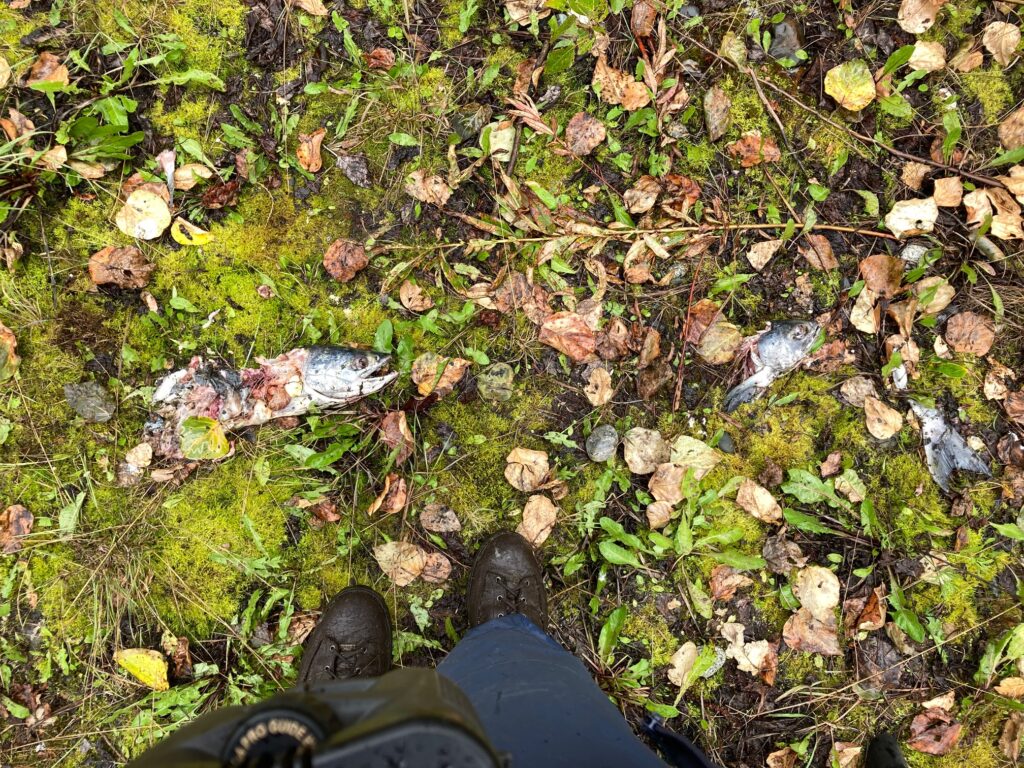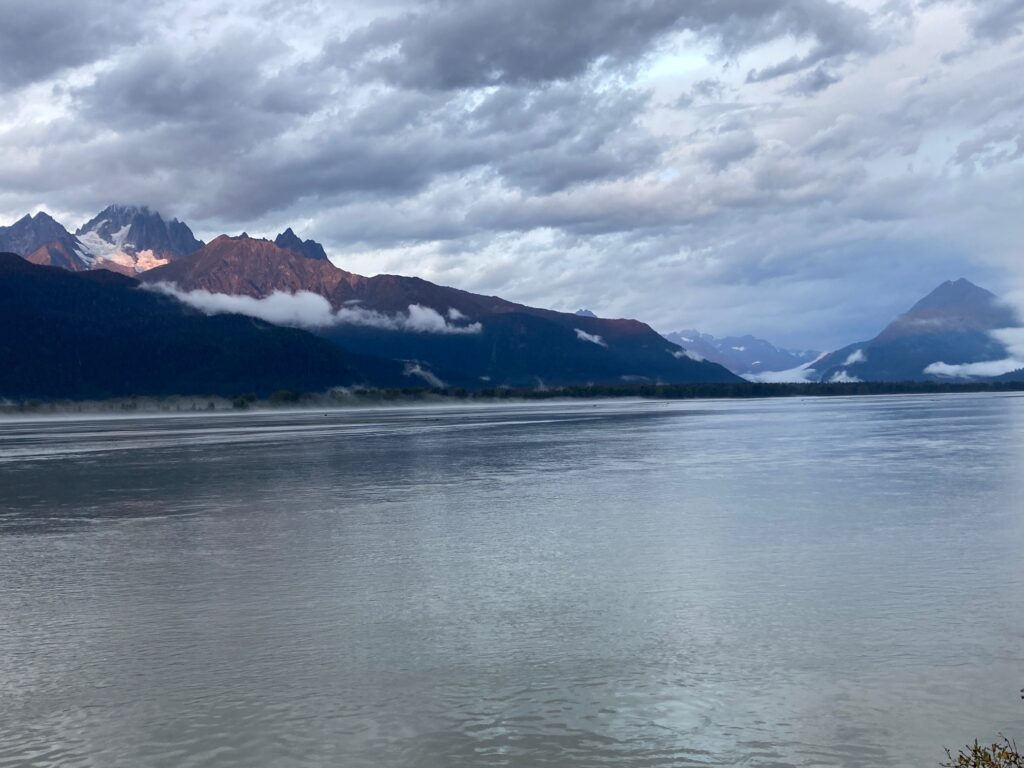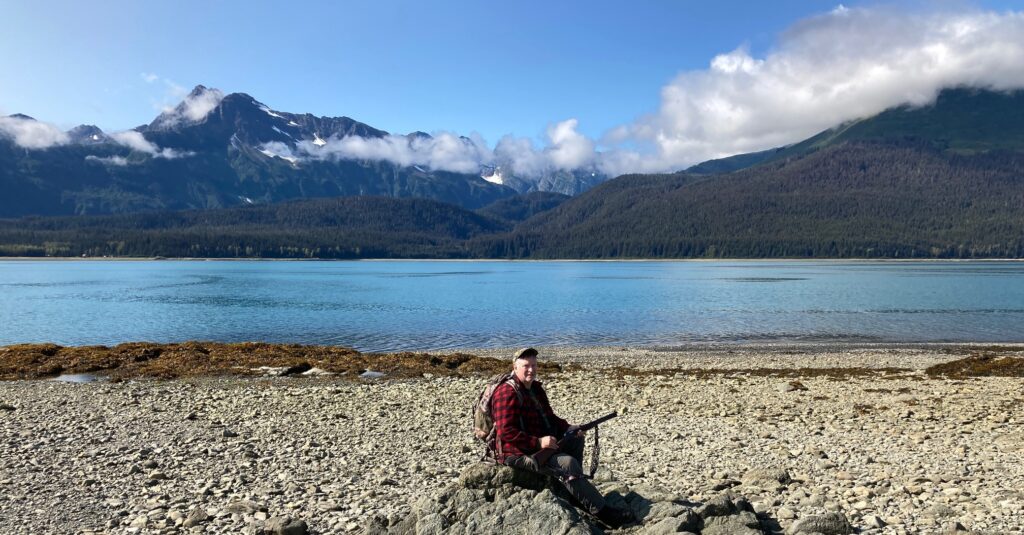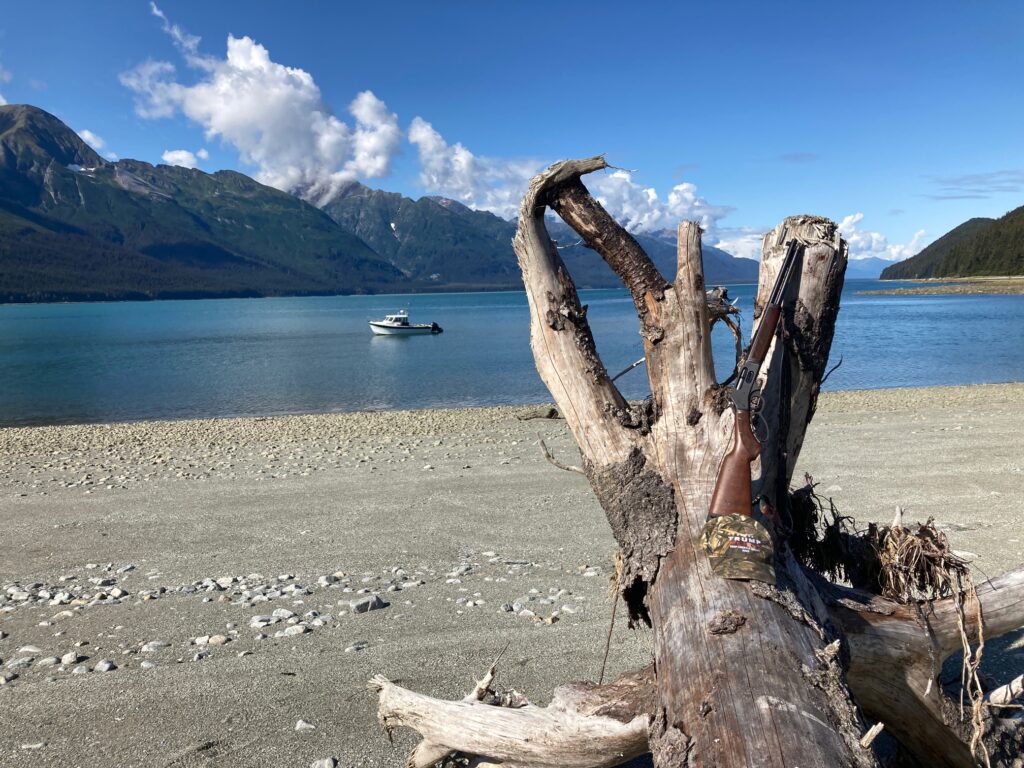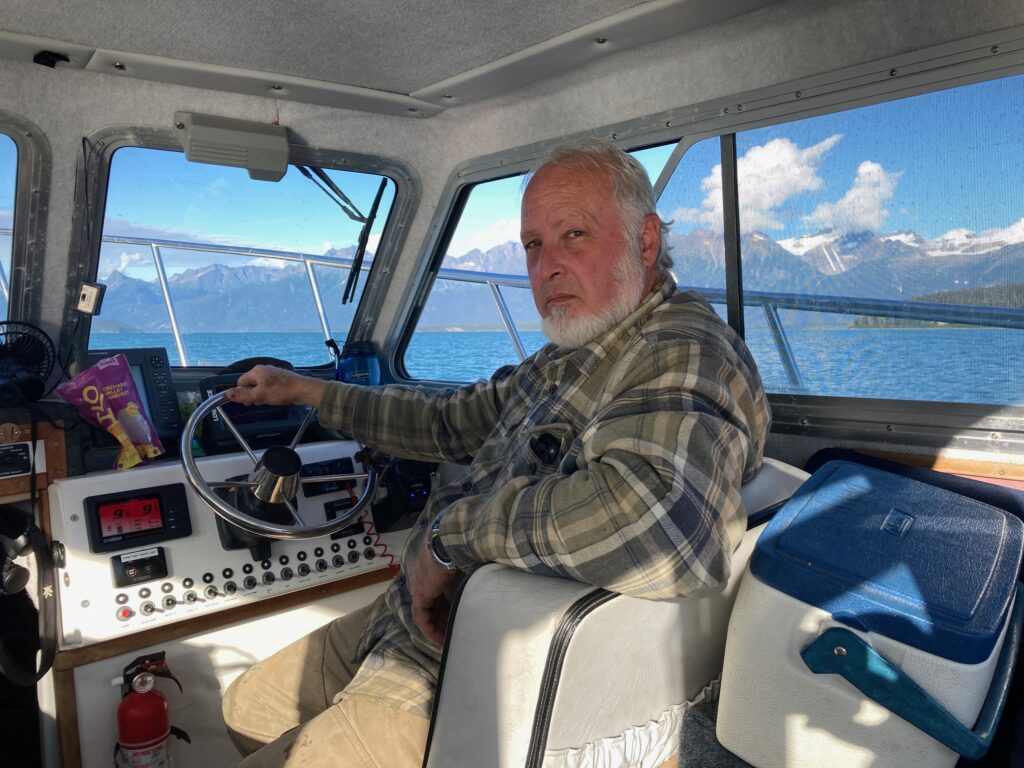Posts Tagged → canoe
A thousand overnight tragedies
Normally, the smell of rotting fish is a signal to clean out the fridge or to leave the area you are in. It’s a universally bad smell, and no one normal wants to be around it. But it was a pervasive good sign where I happened to be standing, because it was associated with the freshly dead salmon heads and remains at my feet that had not been here the previous afternoon. A thousand individual tragedies had occurred along this stream bank overnight, as bears had picked muddy bank spots to grab spawning salmon and take them uphill where they could eat them without the fear of being ambushed by humans, or bigger bears.
We had hunted and fished along a roughly seventy mile vertical stretch of southeastern Alaska for over a week, and in addition to beginning to smell a little fishy myself, I had also saturated and possibly satiated a cavernous need inside me. It is an ever-present deep, clawing need that most wilderness seekers share, be they bikers, hikers, canoers, campers, photographers, fishers or hunters. Sorry, I am not going to quote Thoreau or Muir or Roosevelt on the tonics, joys, highs, or benefits of directly experiencing wilderness. My own wilderness pleasure is gained from simply not seeing a single other human being (except my hunting/fishing partner, when I have one) anywhere near where I am hunting or fishing. That unusual moment results in me feeling like I have better than average odds of achieving my goal, because I have the whole landscape to play without intervention.
On this trip, my “public” goal was a wolf, a blacktail deer, and/or a big black bear better than 300 pounds. Hides and skulls alone were going to come home with me. Edible meat was going directly into my buddy’s freezer. All of the many salmon I caught on the trip went into either my buddy’s smoke house, into his freezer, or into my stomach. It pleases me to report back that chum (dog) salmon directly out of the ocean taste damned good. It is also a fact that chum salmon do not keep well overnight, and that even halibut turn up their noses at it. I suppose freshly caught chum can be immediately canned, but given that there are usually better alternative salmon species to eat and can, I don’t see why a person would make this choice.
Incidentally, about those salmon: Alaska’s management of its salmon runs has been so good, so professional, so scientific, and so successful, that there is actually a glut of salmon in the streams and on the American market. Therefore, wild caught salmon prices are way down. A lot of commercial salmon boats were out netting, and the cannery we visited was in business, but with diesel fuel at about eight bucks a gallon there and salmon at eighty cents a pound, it’s hard to see how the netters will survive. But thanks to the Alaska Department of Fish & Game, the bears have plenty to eat before denning and hibernating for the long, cold Alaskan winter.
Goals are critical on a wilderness trip. Even stupidly simple ones. You have to have goals before you set out on a trip like this, or else you will wonder what the heck you were doing out there when you get back to civilization. My actual personal goal was simple: To fish and to hunt as much as I could, and this goal was easily met. On this trip, I was often able to do both hunting and fishing simultaneously: We slowly trolled salmon spoons behind the boat while glassing the shorelines for critters. A rubber dinghy towed in the backwash provided us the ship-to-shore transportation we needed. See a salmon stream that is calling your name? Go ashore and hunt it, and look for salmon-eating black bears to fill some tags; and look out for the griz. We saw a lot of griz.
Only saw wolf tracks in one very remote spot, and I passed up the one black bear I had a shot at. Only twenty feet across the salmon stream from me, he was either a genetic runt, an ancient-looking yearling, or maybe a female. Whatever kind of black bear he was, he was crabby enough to growl at me before shambling off to less crowded fishing spots. I wouldn’t shoot a bear that small in Pennsylvania, and I sure wasn’t going to fill my Alaska tag with it. Maybe I will go back for the spring bear hunt in 2024.
Despite fighting our way up into the interior of an island known to have blacktail deer, we saw none and feared the griz there more than we were willing to keep going after deer. Signs of griz were everywhere. I picked and popped high bush cranberry and high bush huckleberry while noting the increasing deer browse the farther in and higher I got. But it was a veritable jungle, and surprising a griz up here would mean my certain mauling, possibly my death, and so I decided to nicely frame my deer locking tag when I got home instead of risking life and limb to fill it. I headed back out and found Merlin asleep in the sunshine on the beach.
A loud thud on the bottom of the boat awakened me from my cramped sleeping position, and I rolled out of my sleeping bag onto the cabin floor, which was cluttered with gear and guns. Walking out onto the deck to look for the source of the thump, I saw a sea lion, a seal, and a pod of porpoises chasing salmon all around us in the early morning dimness. Mist rose from the water, and then the rosy tint of dawn’s first sunbeams lit up a nameless glacier high up in the crags across the water. I felt stoned on all this Mother Nature. Like I said, I was there just to hunt and fish, and whether or not I went home with the physically tangible results was not nearly as important as absorbing and sucking up the magic around me and filling that big, hungry, empty cavern in my soul. You just can’t have this magical experience without public lands, and some of that designated as wilderness. This, these, we had.
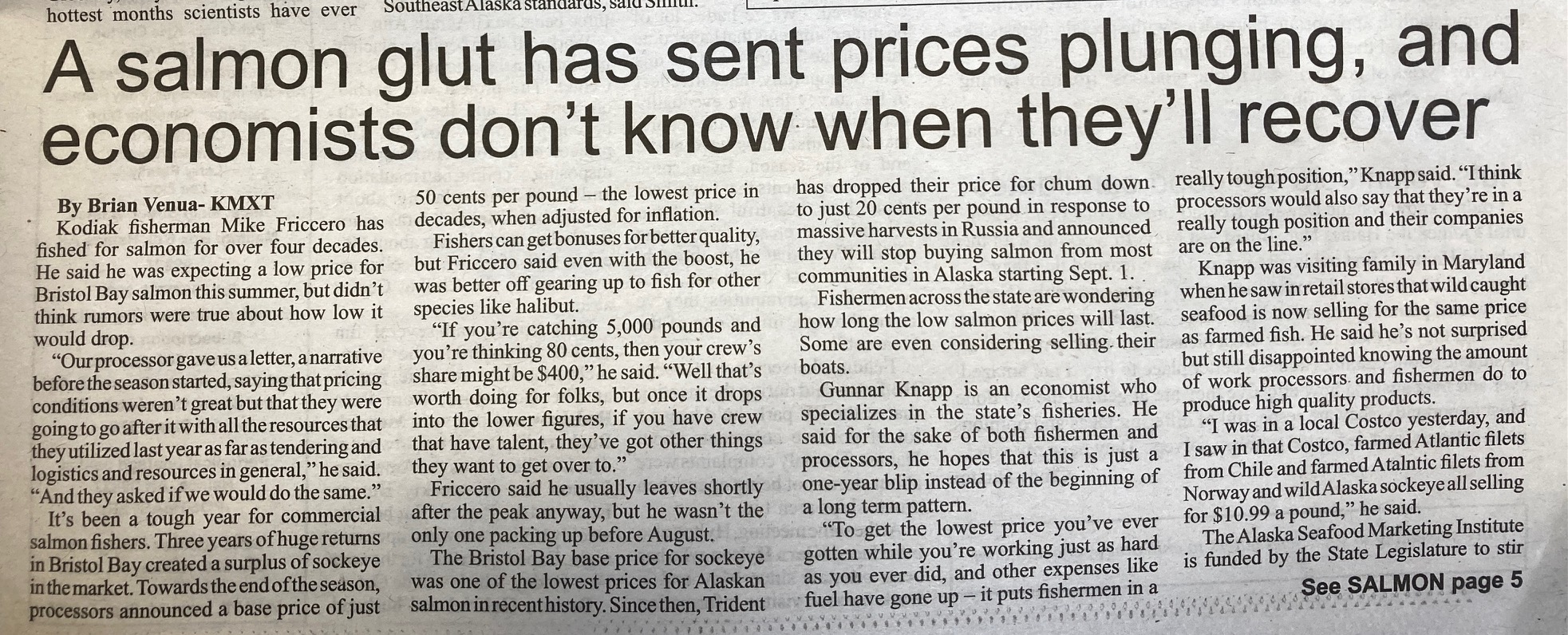
Alaskan salmon management has been so good that there are actually “too many” salmon, if there is such a thing
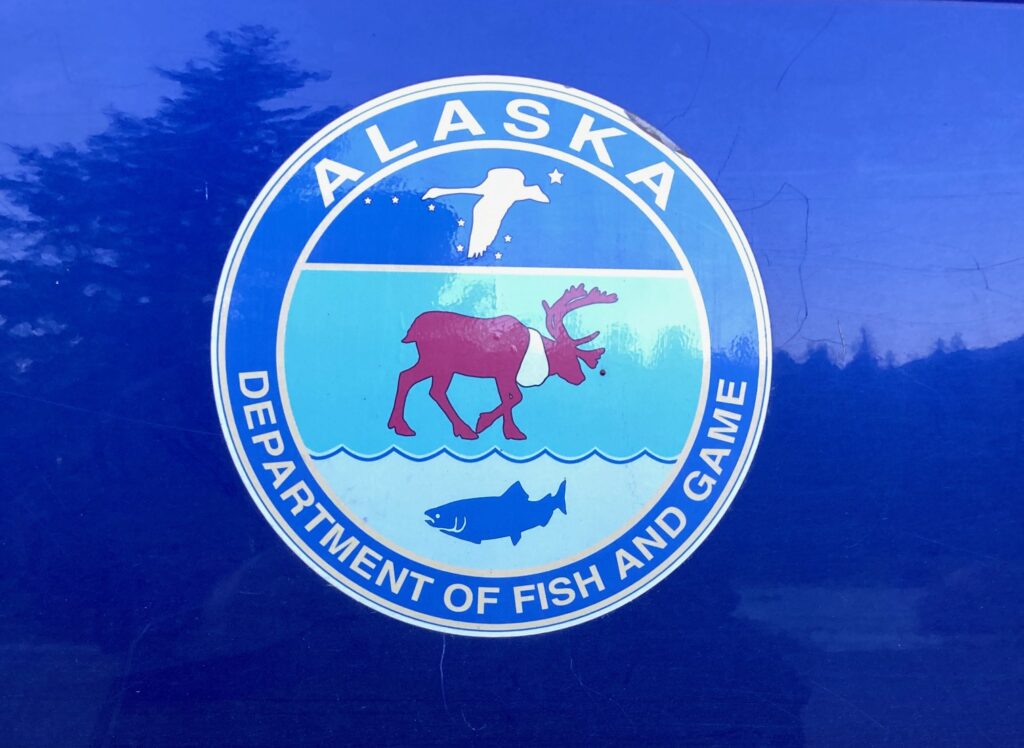
Reflected is the Chilkoot River, where we fished with the bears and a gaggle of international tourists following them up and down the river
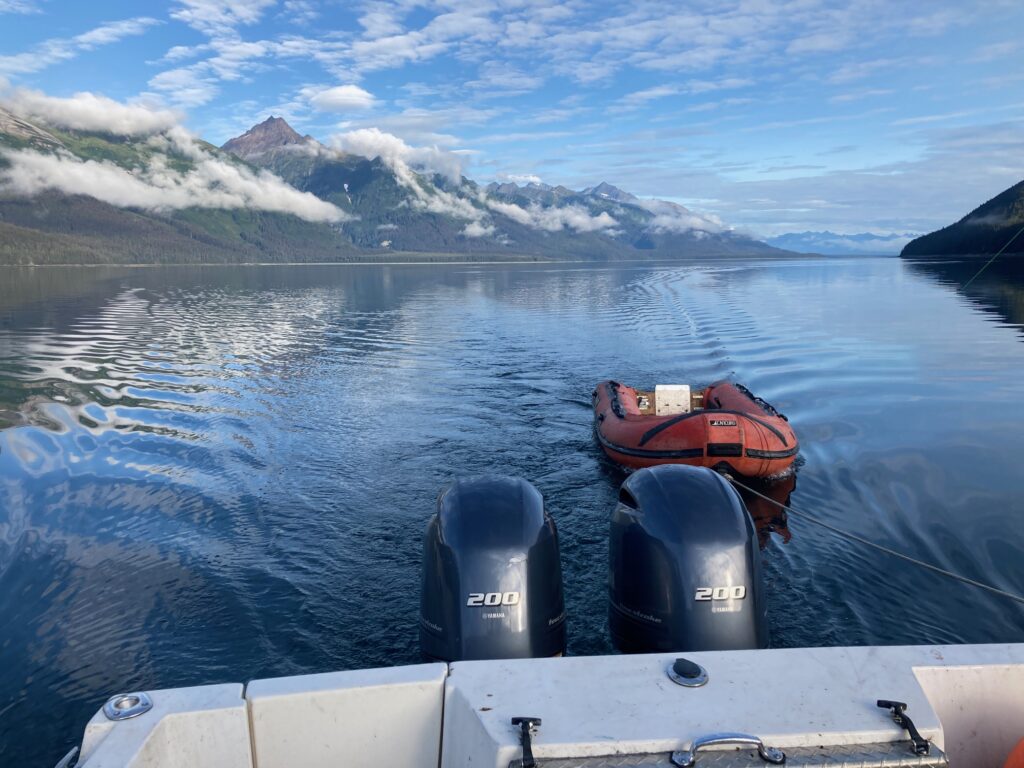
Trolling spoons for salmon, towing our dinghy, and glassing the shoreline for critters. This is hunting and fishing at the same time
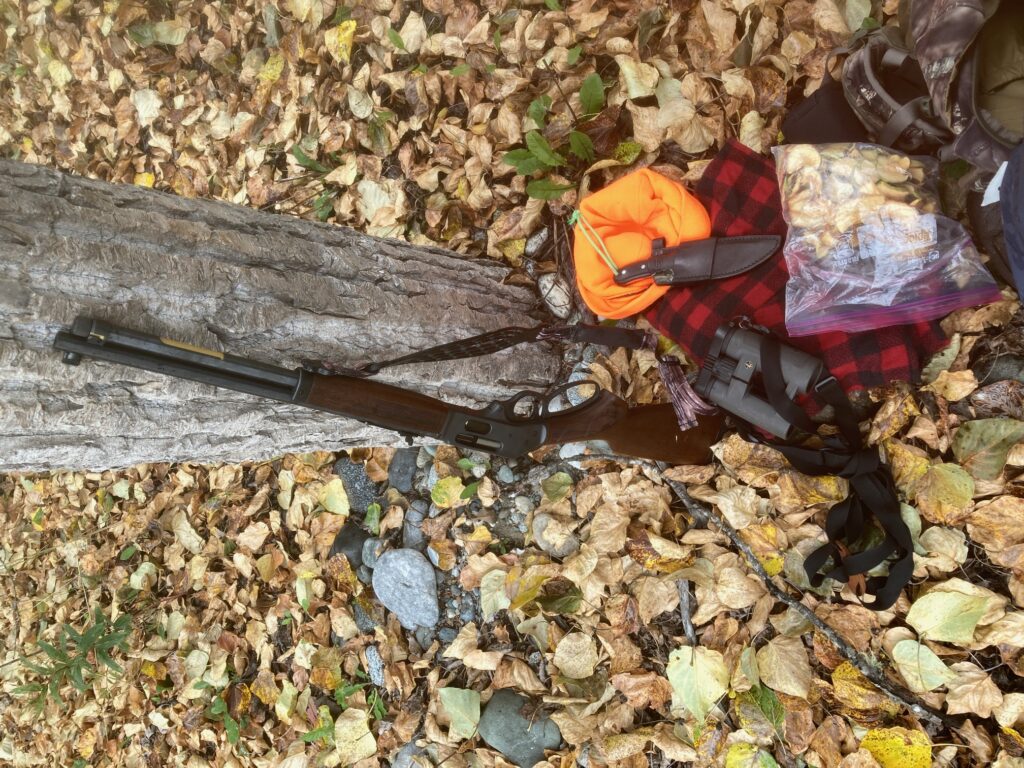
My hunting kit. A Henry 45-70 lever rifle (not crazy about the cheesy rear sight), a JRJ knife, rugged Leupold binoculars, home made dried fruit and jerky
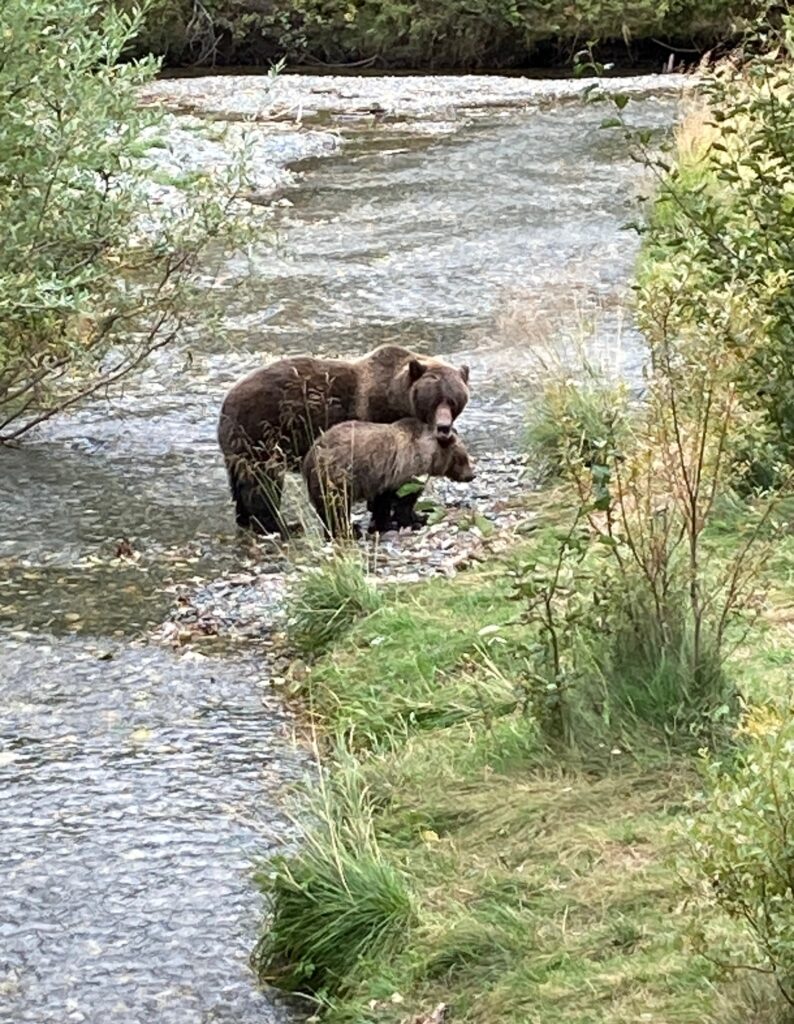
Grizzly sow and cub eating salmon as they spawn upstream from the Chilkat River. I saw a lifetime supply of griz on this trip.
There is hope: Dinosaurs on the river
One of the reasons I object so strenuously to the fake climate alarmism nonsense is that it not only takes away attention and energy from real, measurable environmental problems, it also is so transparently fake and ridiculous that more and more Americans are beginning to doubt the entire environmental quality cause with which “climate change” is unjustifiably included.
When the public is lied to for five decades, told that the climate sky is falling, and that we have only five more years until… pick your fake end-of-times flooding, crop failure, too hot, too cold, end of oil, end of natural gas etc… and those predictions do not play out, then that public becomes weary and suspicious about everything the climate alarmists say, including the very real problems like loss of farmland, forest fragmentation, invasive bugs and plants, loss of wildlife habitat, loss of wild places. And that is bad, because Americans do need to maintain environmental quality, and improve it where needed. If we lose public support for true environmental problems that have real world solutions, then we will truly and needlessly suffer in the end.
Aside from being wrong about literally everything they claim and then demand, one of the other problems with climate alarmists is that they assume and promote a view of nature as steady state. That is, Nature never changes, it is always a Garden of Eden, except for human intervention. And when humans make mistakes or act greedily, climate alarmists say massive government intervention is needed, to the point where Western Civilization must be turned on its head, democracy must be canceled (for our own good, of course), and government bureaucrats must be in charge of every choice and decision we now make (we can’t be trusted to make “the right” choice). This is yet more nonsense, for the simple reason that Nature heals itself naturally.
How else does Nature recover from natural catastrophes like explosive and polluting volcanoes, floods, huge fires, meteor strikes, tornados etc? Well, Nature abhors a vacuum, and where a gap exists in Nature, some animal and some plant will adapt to exploit it and make room to live and grow in it. Even if the prior plant or animal can no longer live there.
In 2006 something very bad and mysterious was suddenly happening to the Susquehanna River. A hard-fighting smallmouth bass fishery so good (100-200 fish per day per fisherman) that fishermen came from all around the world to fish (and spend the night and spend their money locally) from Sunbury down to the Conowingo Dam in Maryland, was suddenly gone. Vanished. And gone along with the vanished smallmouth bass were the big predacious muskellunge, brown trout from the feeder stream mouths, largemouth bass, fallfish, sunfish, redeye, and shad.
Within just a few years a highly tangible and visible environmental catastrophe had revealed itself as a long stretch of the Susquehanna River literally went belly up and died. Native aquatic insects, the backbone of all life in the water there, disappeared. Up until 2005, you could stand on a late summer afternoon in Harrisburg along the Front Street Greenbelt walk and watch as the entire river surface practically boiled with dimples from rising fish eating hatching mayflies, caddis flies, and stone flies. In 2006 that whole activity ceased. Literally everything in the river died, and it still has not come back.
Long story short, what caused the demise of the Susquehanna River was a perfect storm of every bad thing that could happen to any waterway anywhere. If it could go wrong for the Susquehanna, it did go wrong in just a few short years, and the sum total was a total unmitigated shock and detonation of the waterway.
Several years of drought and unusually warm summers led to unusually low water flows, which left fish exposed and with no where to hide from predators. The over-heated water then developed algae blooms that robbed the water of its oxygen, suffocating fish and prey crustaceans like crayfish. When large summer thunderstorms happened, they overwhelmed and drowned the many community sewage treatment plants along the river, resulting in “Combined Sewage Overflows” up and down the river. These huge torrents of raw, untreated, undecomposed human filth blasted into the low, warm river water. There was no dilution of the mess, because the river was too low and too slow. One can only imagine that the conditions then were ripe for that human excrement to sit in still waters and become a feast for bacteria, which attacked the few surviving fish and left them with open wound lesions. Then viruses appeared, apparently rejoicing in the poor conditions, further attacking the remaining fish. Finally, when Pennsylvania’s shale gas boom started in 2006, there were some documented and suspected incidents of “midnight dumping”, where large tanker trucks filled with well brine or frack water were illegally unloaded into waterways that, of course, went into the Susquehanna River.
With the demise of the river’s fish, native grasses and watercress, the birds that migrated to, lived on, and migrated down the river, had nothing to eat. They also disappeared. Hundreds of egrets and herons, and huge rafts of ducks and geese used to grace the shores and skies above the river around Harrisburg on any given summer or Fall day. Not any more.
In 2005 one of America’s largest Great Egret rookeries flourished on the islands in the Harrisburg Archipelago across from Harrisburg City. My fishing buddy Ed Weintraub and I used to wade half a mile out to fish among the archipelago’s islands, and marvel at the hundreds of these gigantic pterodactyl-looking birds and their enormous nests. The place sounded like what a Jurassic jungle must have been like, with loud screams, cries, grunts, groans, and other weird sounds from the huge birds and their babies assembled in that relatively small place. All the boulders jutting out of the river were coated in bright white bird dookie, as were the trees. The entire place stank to high heaven of rotting fish. It was a natural marvel of human-Mother Nature coexistence that reflected the incredible environmental diversity and health of the waterway, despite it being surrounded by huge train yards and human communities. This all was also eventually lost to whatever was ailing the river.
In 2011, while kayaking and wading the unnaturally smelly river in Harrisburg, I contracted MRSA in a tiny scratch on my leg, and then spent four days on a drip IV in a hospital, successfully avoiding the loss of my leg. The river was deader than a doornail and I almost joined it.
Last week two of us took a nice long canoe trip down river, my first in years, to see how the river has changed. We see a few bass fishermen now, local catfish guides brag about sixty-pounders, and walleye boats are out every day. Something in the river must be improved. It seems to be healing, but it is nowhere near where it was twenty years ago. I know that the West Branch of the Susquehanna is greatly improved from twenty years ago, when acid mine drainage turned its waters an unnatural turquoise blue. Now those old mines are washed out by the subterranean springs that first unleashed the mines’ acid, and the cold water is now clean and actually improving the West Branch.
Large bass and catfish -a more rugged critter filling the void left by the formerly numerous smallmouth bass- scurried out of our shadow, and as we approached the Harrisburg Archipelago, we began to see Great Egrets wading around the upstream islands. Lots of them. A juvenile bald eagle patrolled above. We paddled around and through the Archipelago and were surrounded by cormorants (a federally protected pest), mallards, wood ducks, turtles, a snake, and lots of nesting Great Egrets.
The dinosaurs were back on the islands and so were my hopes for a comeback by the river. No metaphysical cataclysmic environmental or political catastrophes were required for Mother Nature to bounce back. She always does, and she always will, despite what the Al Gore type fakirs predict.
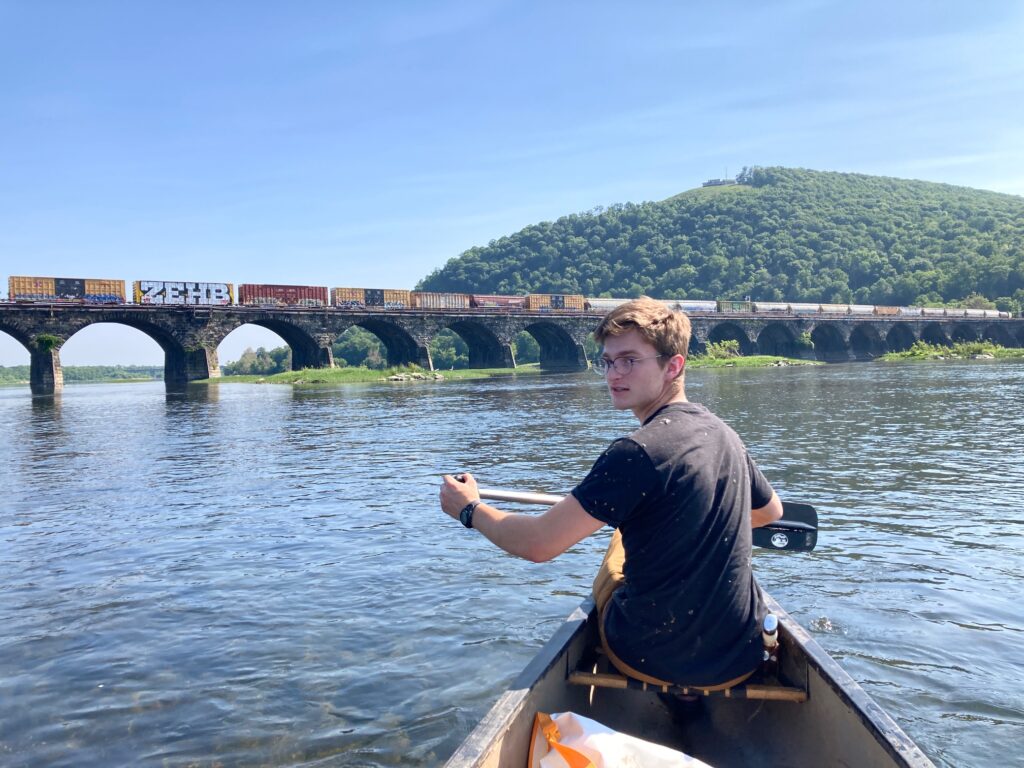
The Rockville Bridge is the longest stone arch bridge still in use in the world. I think it is longer than the Glenfinnan Viaduct in Fort William, Scotland, which I have ridden over in a train. The Susquehanna River is slowly recovering from the many things that ailed her, and is now a delight to experience.
Fifty years of designated wilderness
Two weeks ago marked the fiftieth anniversary of the signing of the Wilderness Act.
It applies to federal designation of remote areas, not to states. States can create their own wild areas, and some do. States closest to human populations and land development seem to also be most assertive about setting aside large areas for people and animals to enjoy.
I enjoy wilderness a lot. Hunting, camping, hiking, fishing, and exploring are all activities I do in designated wilderness.
Every year I hunt Upstate New York’s Adirondack Mountains, in a large designated wilderness area. Pitching a tent miles in from the trail head, the only person I see is a hunting partner. Serenity like that is tough to find unless you already live in northern Vermont, Maine, Montana, Idaho, Wyoming or Alaska. It’s a valuable thing, that tranquility.
This summer my young son sat in my lap late at night, watching shooting stars against an already unbelievably starry sky. Loons cried out all around us. A gentle breeze rustled the leaves on the birch trees above us and caused the lake to lap against our rocky shore.
Only by driving a long way north, and then canoeing on a designated wilderness lake, and camping on a designated wilderness island in that lake, were we able to find such peace and quiet. No one else was anywhere around us. We were totally alone, with our camp fires, firewood chores, fishing rods, and deep sleeps in the cold tent.
These are memories likely to make my son smile even as he ages and grapples with responsibilities and challenges of adulthood. We couldn’t do it without wilderness.
Wilderness is a touchstone for a frontier nation like America. Wilderness equals freedom of movement, freedom of action. The same sort of freedoms that instigated insurrection against the British monarchy. American frontiersmen became accustomed to individual liberty unlike anything seen in Western Civilization. They enshrined those liberties in our Constitution.
Sure, there are some frustrations associated with managing wilderness.
Out West, wilderness designation has become a politicized fight over access to valuable minerals under the ground. Access usually involves roads, and roads are the antithesis of a wild experience.
Given the large amount of publicly owned land in the West, I cannot help but wonder if there isn’t some bartering that could go on to resolve these fights. Take multiple use public land and designate it as wilderness, so other areas can responsibly yield their valuable minerals. Plenty of present day public land was once heavily logged, farmed, ranched, and mined, but those scars are long gone.
You can hike all day in a Gold Mine Creek basin and find one tiny miner’s shack from 1902. All other signs have washed away, been covered up by new layers of soil, etc. So there is precedent for taking once-used land and letting it heal to the point where we visitors would swear it is pristine.
Out East, where we have large hardwood forests, occasionally, huge valuable timber falls over in wilderness areas, and the financially hard-pressed locals could surely use the income from retrieving, milling, and selling lumber from those trees. But wilderness rules usually require such behemoths to stay where they lay, symbols of an old forest rarely seen anywhere today. They can be seen as profligate waste, I understand that. I also understand that some now-rare salamanders might only make their homes under these rotting giant logs, and nowhere else.
Seeing the yellow-on-black body of the salamander makes me think of the starry night sky filled with shooting stars. A rare thing of beauty in a world full of bustle, noise, voices, and concrete. For me, I’ll take the salamander.

